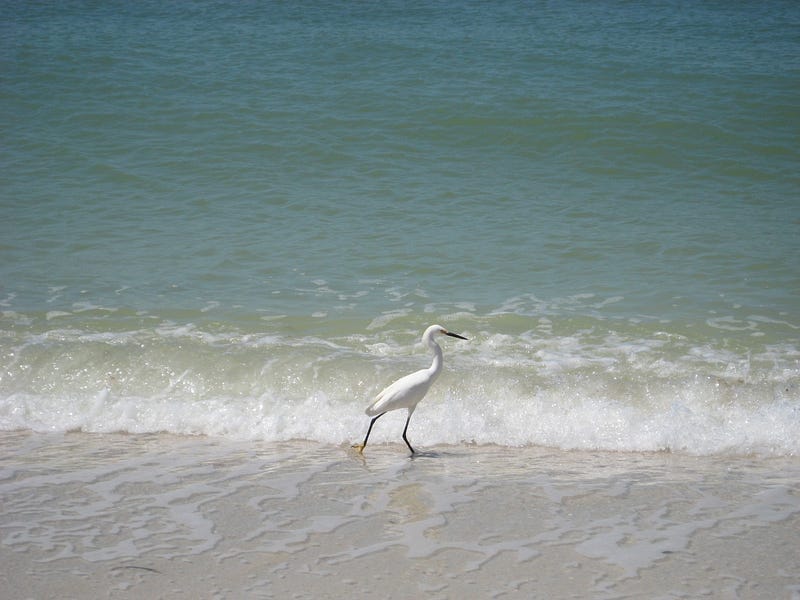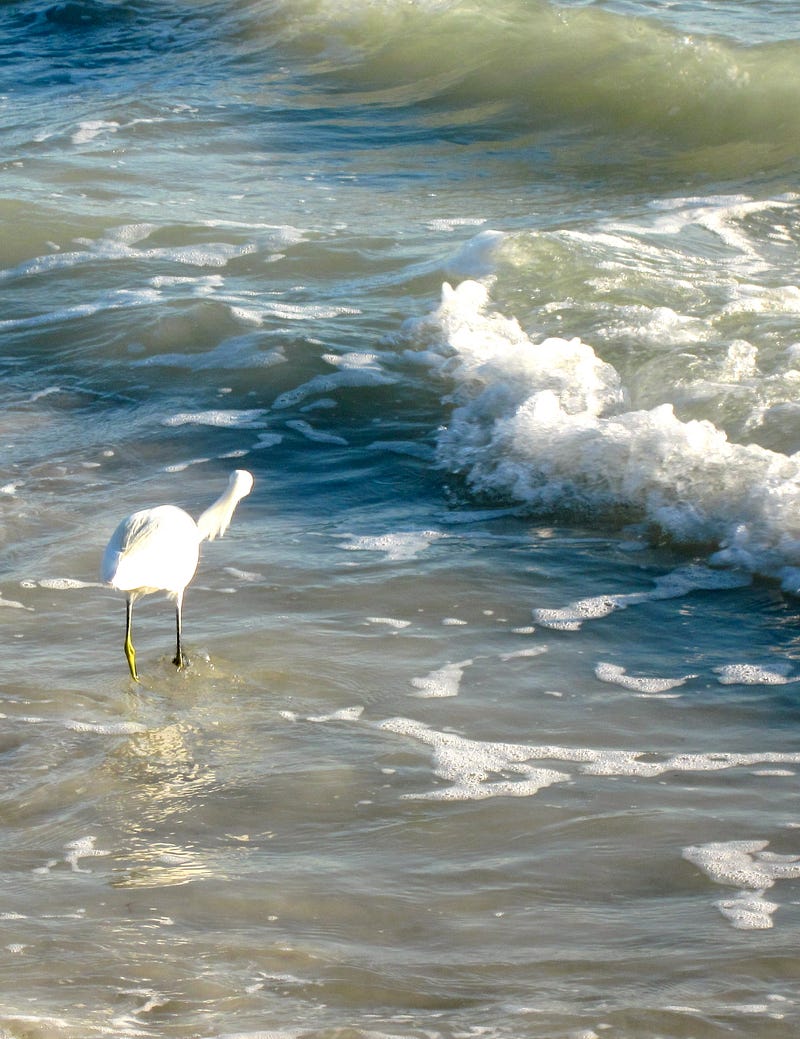
This is a Snowy Egret, Egretta thula*, I saw a while back doing something very peculiar.
By itself, seeing one of these birds isn’t that rare in SW Florida, where I live. Decades ago that wouldn’t have been true because of the plumage trade for hats. Thankfully, many populations of Florida’s wading birds have made a full recovery since then. This is fortunate for me, since I consider birding a bit of a hobby and the long-legged wading birds are some of my favorites.
However, I approach that hobby a bit differently. For one thing, I don’t have a bird list, where I keep track of all of the different species of birds I have seen in my lifetime (if you’re a birder who does have such a list, this isn’t a knock on you, it’s just my personal preference). While I am always excited to see a bird I’ve never seen before, it’s not my top priority. Instead, I would much rather observe a species I’ve seen before doing something interesting. That applies to all species, not just birds, and will be the subject of several stories in this series.

With that in mind, there were a couple of things that made this individual different. Firstly, it was on a beach instead of a pond or roadside ditch, which are among the most common places to see egrets here in Florida. However, they are common enough on beaches that most people don’t pay them much mind. But, this individual was also behaving in a unique manner.

Herons and egrets use keen eyesight and fast reflexes to catch their prey. Watching one foraging is always a treat. This particular egret was foraging in the shallows, but with its head crooked to the side. Normally, the head is held straight as the bird scans for small fish. I had never seen anything like this before. It took me a moment to realize that this egret had modified its foraging behavior for the beach environment.
The ponds and ditches of Florida are usually calm, but the beach is a much more dynamic place. Water is constantly in motion (you can see the breaking waves in the picture). In order to compensate for this, the egret was bending its head to the side and striking at an angle. And it worked! I saw this bird catch a small fish in conditions that were much more difficult than normal for foraging. All it had to do was modify its behavior to suit its new environment.
Since I first witnessed this, I have seen snowy egrets replicating this behavior several times. Just a few weeks ago, I even saw a Great Egret, Ardea alba, performing the exact same behavior on the beach (I unfortunately didn’t get a photo). This was striking because the larger bird is much less common on beaches than its smaller cousin, but also because its size makes such a maneuver more difficult. I found it difficult to contain my enthusiasm at the time, especially because at that point I already knew this was going to be the first story I chose to share.
It is situations like these that have driven my love for the natural world. As I mentioned in my first post, the New England Aquarium and Boston Museum of Science shaped this early on, but it has been my experiences out in the wild that have focused my attention. They aren’t particularly new or earth-shattering, but they are very interesting to see and to think about. Some people get a rush on roller coasters or any other number of things. I get that rush from observing things like that egret foraging on the beach.
Next week, I’m going to travel back in time to a major inflection point in my relationship with the natural world (although I wouldn’t realize its full significance until years later). I’ll explore some of the exciting things I saw and how they drove my future interest in the relationship between animals, their behavior, and the surrounding environment.
Photo credits: Margaret Ward
*“I thought you said in your intro post that these would be stories for non-scientists. Why are you using Latin names?” That is a very good point. It is not my intention to confuse people. The reason why I have made the choice to include scientific names in these posts is the same reason why scientists use them, so that everyone is on the same page.
With common names, you often have multiple names for one species or a common name that is similar between multiple species (the latter is especially true for plants). It also eliminates confusion if the native language of the reader is not English.
I want anyone reading these to be able to look up a species I mention and be sure it’s the right one. That is why I’ve decided to include scientific names, because I believe they can help foster connections and understanding if they’re used properly.